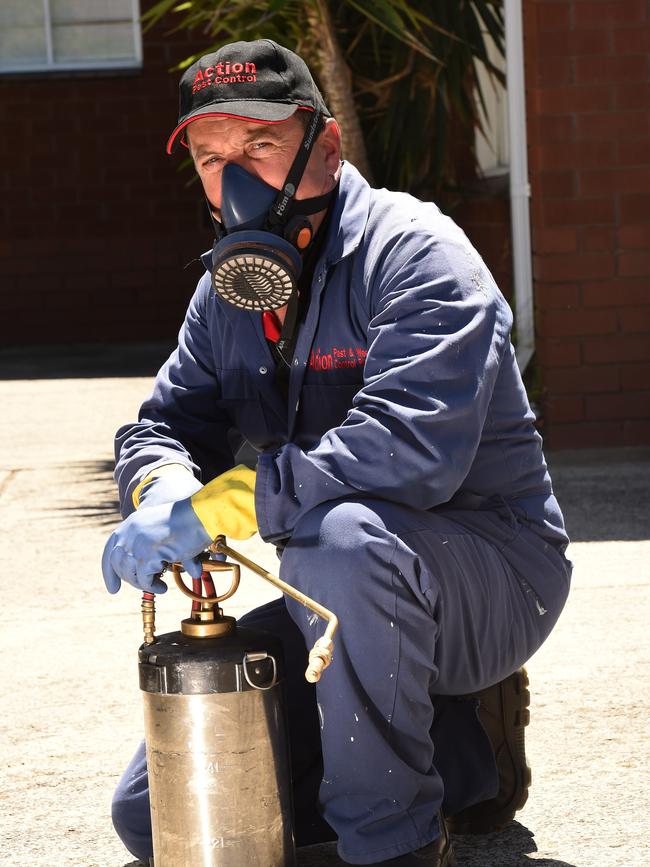Termites: Kingston Council warns region high-risk white ant area
Kingston Council has warned the region is a hotspot for termites, meaning a raft of new rules are coming in for builders and homeowners. If you live in the affected area, here’s what you need to know.
Inner South
Don't miss out on the headlines from Inner South . Followed categories will be added to My News.
TERMITE protection barriers must now be installed in all new builds in Kingston after the council declared the area termite prone.
The declaration follows advice from pest controllers who believe about 90 per cent of the municipality was a hot spot for the hugely destructive ants, but warned buildings weren’t protected.
Now new home builders and homeowners adding extensions, must install anti-termite measures which would add on average about $2,000 to the build costs.
But councillors and experts say those expenses are much less than the cost of fixing the damage caused by a termite infestation.
A barrier is a chemical layer applied to a building in early stages of construction. Chemical treatments can be redone about every five years at a cost of about $450.

Mayor Steve Staikos said the decision, which comes into effect on January 1, 2019, aims to increase community awareness about the risks of termites at properties and to increase measures to prevent them.
“CSIRO reports have revealed that termites are prevalent across Victoria. Being declared a termite prone area will ensure that developers put in measures to protect new properties against infestations,” said Cr Staikos
Kingston’s declaration comes almost two years after the Leader launched a War on White Ants campaign calling on the council to act to ensure the large number of new developments in the region were termite proof.
Pest expert Jaime Ackland had warned that Parkdale, Mentone, Cheltenham, Braeside, Dingley, Mordialloc, Aspendale Gardens, Edithvale, Chelsea, Chelsea Heights and Aspendale were termite hot spots.
Homeowner Clare Bristow had issued a dire warning about the destructive danger of termites after thousands ate through her three-year-old house.
The Parkdale woman had to have an entire staircase rebuilt and other parts of her home repaired.
In Victoria it is up to councils to declare their area termite-prone and introduce building standards to deter the pest. Until this week, Kingston was one of 24 undeclared local government areas.
Cr Tamsin Bearsley, who was pushing for the declaration, has said it was far cheaper to protect at the building stage rather than have to expensively repair what the termites have destroyed.
Cr Bearsley said she received at least one phone call a month from a resident that had paid thousands of dollars to repair termite damage.
“They say ‘I didn’t know there were termites because I called the council and they said (Kingston) is not a termite prone zone,” Cr Bearsley said.
“It’s really important that we make our residents aware. It’s not scary if you’re checking for them and you can do things to protect your home against termites.”
Kingston chief executive John Nevins said declaring the area termite prone would also alert house hunters to the pest and encourage them to seek advice from experts before buying property.
“There is an element of community education to this as well as the mandatory building protection measures,” Mr Nevins said.
In Victoria it is up to councils to declare their area termite-prone and introduce building standards to deter the pest.
Of Melbourne’s 31 municipalities 15 are designated termite areas including Glen Eira, Frankston and Monash.
Archicentre Australia director Peter Georgiev has said white ants did not discriminate against municipal boundaries and to say they were in one region and not another was “nonsensical”.
WHAT TO LOOK FOR
According to Archicentre Australia, some of the warning signs of termites to look out for include:
discarded wings from swarmers
bubbling paint
strange bits of mud in plasterwork, or
disintegrating wood.
MORE LOCAL NEWS


